Editor’s note
Marie Reig Florensa is on a journey of discovery, getting to know heart-based creative leaders from around the globe.
A leader of the heart: Are you one of them? is a series of compact, heart-charged articles where executive coach Marie Reig Florensa – together with Carlos El Asmar – explore what it means to “lead from the heart.”
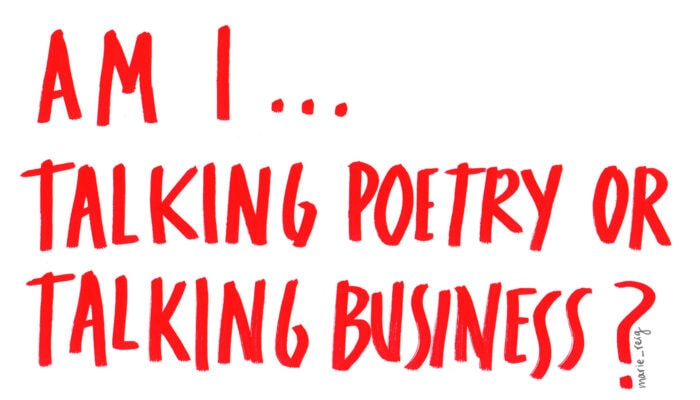
- Am I talking poetry or am I talking business?
I am confident that when you hear idioms such as “open your heart”, “listen to your heart”, and “follow your heart” the first reaction is to associate them with poetic idealism rather than real business strategy. Yet the benefits that heart-based leadership reports for creativity, creative leaders, creative organizations, and business are widely unknown.
- What would be your reaction if I tell you that leading from the heart might be the most efficient, long-term, business leadership strategy when observing the four main business challenges of our digitalization times?
It is true that when it comes to “business talk” we tend to look at “the heart” as an unrealistic, unpractical, inefficient set of emotions, as the opposite of “the head”, as leadership specialist Mark C. Crowley points out. Yet, if you have been reading this series of posts, by now you already better understand that the boundary lines of the court in which to play the heart-based leadership game are somehow different from what, at first sight, common understanding, and popular assumptions make us believe.
Leading from the heart has little to do with “head vs heart” stereotypes and it is all about head, heart & guts working in synergy.

Let’s continue walking this shared Journey to the Heart exploring together the most common assumptions and stereotypesassociated with what leading from the heart might bring up in business, as well as the most unknown and relevant benefits of heart-based leadership from a business perspective.
By the end of this post, I am also convinced that you will see heart-based leadership with fresh eyes when it comes to understanding its true value to drive business success and positive impact.
While you read, you are also invited to bear in mind the rules of this game: open eyes, open ears, open mind, and open heart. Because it is okay to wonder and question what is believed to be known. As the wise Socrates told us, this is what leads us to the pathway where to find better answers than the ones we had before. Here we go:
- Is heart-based leadership able and willing to drive profit?
- Is heart-based leadership too soft to get strong results?
- Is heart-based leadership fit for high-speed, digital, and technological times?

- Is heart-based leadership able and willing to drive profit?
Experts acknowledge that from a mainstream business perspective, referring to the “heart” has been traditionally viewed with a certain degree of skepticism, resistance, and objection. The “heart” tends to be perceived as fuzzy, touchy feeling, fluffy, utopian, kumbaya, soft and sentimental. Often viewed as antithetical to driving profit.
Scholars and specialists note that this misunderstanding is partly based on the assumption that productivity, and with it, profitability, is the result of a work ethic that considers necessary to keep people under a certain degree of tension. This, point experts, reflects a belief (conscious or unconscious) in fear and intimidation as the best drivers of performance. Yet this is a limiting belief and an assumption that betrays what top leadership scholars and experts define as needed to drive true productivity: meaning and direction. Contrary to common belief, positive psychology studies also tell us that when it comes to cooperation and creativity our physiology is wired for love, not fear.
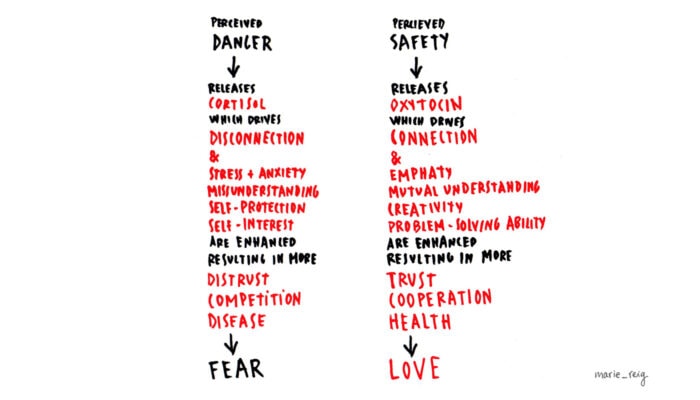
Heart-based leadership not only reflects the direct connection between engagement, performance, and profitability but also the capability to develop and sustain complex cooperation across stakeholders, as well as enhance the organization’s creativity and innovation capabilities.
Contrary to common preconceptions, the truth is that the “heart” in business leadership does not miss the requirement of building and sustaining a profitable business. Heart-based businesses measure their results and success not only in terms of financial profits but also by considering the benefits rendered to people and the planet. What matters is “making a difference” beyond profit – hence building and sustaining a profitable meaningful business.
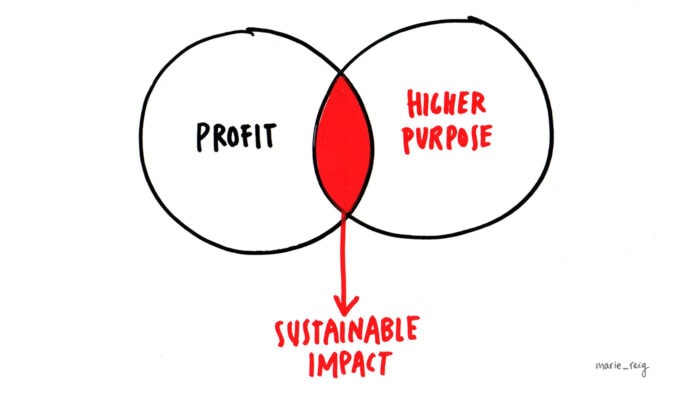
- Is heart-based leadership too soft to get strong results?
Academic research highlights that traditionally there has been a dominant understanding that leadership is about being “at the top” and “having all the answers”. True is that effective leadership is still nowadays erroneously associated with a “command and control“ mindset and approach. When things move fast, uncertainty reigns, and creativity and innovation are pursued having to tell others what to do or controlling how things are being done does not support business success. Thus it dampens talent and creates bottlenecks.
We must also consider that research confirms that business leaders have generally encountered difficulties in translating heart-related intentions into practice. For example, the value of emotional intelligence in life and business has only been popularised since the mid-nineties. That is less than 30 years ago.
“It is easier to lead people and be in a professional setting when emotions are not there. Yeah, because emotions get messy. So you have to be willing to sacrifice a little comfort zone. Right for the well-being of the whole team.”
– Carlos El Asmar
It is also true that the heart, in its relationship with empathy, vulnerability, humility, inclusiveness, generosity, balance, and patience, tends to be more associated with what is feminine. In this sense, it is connected with certain gendered leadership characteristics and behaviors that are culturally perceived as less adequate and less effective. Being a “strong leader” has been long associated with projecting an unapproachable, masculine, highly charismatic, and opinionated personality. Yet this is not the type of leader able to build up synergetic collaboration and support talent growth.

There are also status-related limiting perspectives, in which what’s associated with the “heart”, emotions-related work, is considered less or not as much as what is associated with the “head”, which is commonly understood as “more elevated” for its cognitive and intellectual requisites. Yet, nowadays science confirms that all thoughts are always emotionalized, there is no objective or solely rational thoughts because, in fact, we are emotional creatures that think (and not the other way around). Only by embracing and learning to manage emotions, we are able to make the most of our creative potential as individuals, teams, and organizations.
“To follow your heart requires vulnerability. Being vulnerable is about opening your heart, about embracing the possibility of being hurt, and this is a sign of courage. To follow your heart is not about being weak but truly strong, contrary to what many people might commonly think”.
– Carlos El Asmar
- Is heart-based leadership fit for high-speed, digital, and technological times?
Leading from the heart is a win-win-win business approach that positively responds to the four main business challenges of our time, according to expert research: the speed of change and innovation, the imperative of collaboration, the requisite for employee engagement, and the demand for organizational and business purpose.
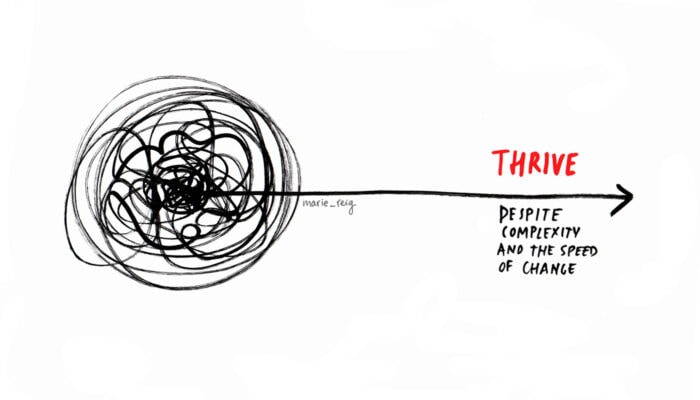
- Heart-based leadership empowers leaders, teams, and organizations to thrive despite the speed of change and innovation.
This is because it fosters trust, ongoing learning, and democratized leadership across all levels in the organization. Yes, it supports “agile”, “networked” and teams-based organizational models within organizational cultures and operational structures that seek to promote collaboration. It also enables trust to flourish which in its turn enables taking risks, the sharing of information, and openly discussing ideas.
“Ours is a context that requires fast ongoing learning extracted from confronting and digging into failure, challenges, and setbacks. All of which are valuable sources of information that drive innovation, problem-solving, and creativity”.
When uncertainty reigns, removing hierarchical decision-making bottlenecks becomes a critical factor for success, says Martin Reeves chairman of the BCG Henderson Institute, BCG’s think tank dedicated to exploring and developing valuable new insights from business, technology, economics, and science. In other words, agility, flexibility, innovation, and creativity can better thrive when leaders are found at all levels of the organization, as leading from the heart fosters and supports.
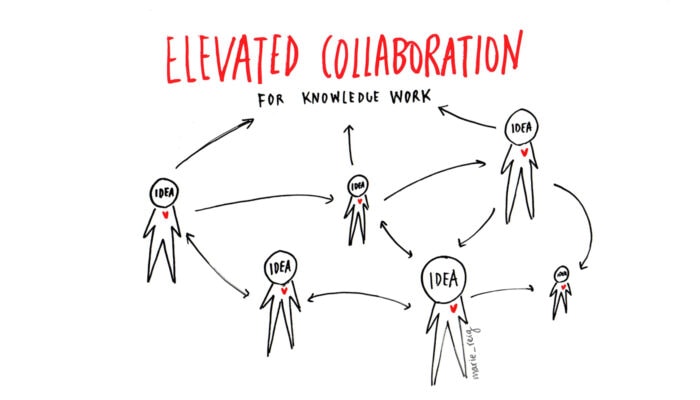
When talent is a competitive advantage and the most important asset of organizations, then considering people’s needs it is no more a “nice to have” but an imperative to drive collaboration. MIT Sloan’s “Future of Leadership” study likewise highlights that “Mastering Relationships” is one of the essential leadership behaviors for the Digital Age. This is because knowledge work is creative work we do in interaction, as sociologist Esko Kilpi states.
The ones who dare to try, know that in our fast-changing and highly interconnected digital world heart-based leadership not only reduces friction but it actually builds up synergy and facilitates co-learning and co-creating to achieve more and better for all.
The imperative of collaboration to achieve business success requires a “new” leadership playbook on the basis of high-quality interpersonal relationships, as heart-based leadership does.

- Heart-based leadership conduits employee engagement. And only when we are engaged our full potential is unleashed.
We have briefly explored engagement as a driver for performance and profit, yet engagement is also connected with the employee’s will for personal growth and development and their aspiration for meaningful contribution and fulfillment at work. In fact, that is what we all truly aspire to, to unleash self-realization by means of our contribution at work.
When we lead from the heart, as we have learned across this post series, taking into consideration the needs and aspirations of people, employees, and team members, as well as cultivating a positive working climate, is naturally done from genuine care for the whole human being. Heart-based leadership creates cultures where people are invited to unfold all that they can become.
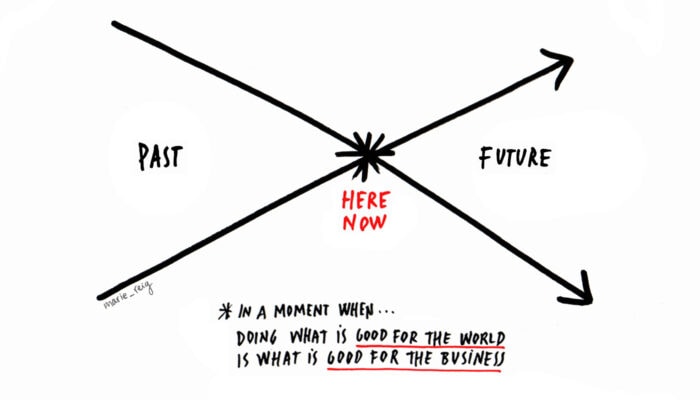
- Leading from the heart is made out of purpose-driven leadership that is able to foster a purpose driven-organization and a purpose driven-business.
With it, it gives response to the growing aspirations and expectations of employees, investors, and consumers who, in front of the societal context of crisis, demand brands and organizations to act as social agents, to take a stand, to do good while at the same time generate sustainable profit. This requires the organizational leader(s) to embody the organizational purpose in resonance with his/her own. This is not an easy job. The thing is if the purpose is not pursued as a genuine belief, if it is not authentic, it is not going to work.
Nowadays purpose has also a strategic business function, as it is connected with the need for organizational alignment to achieve success to fast and resiliently navigate the waves of uncertain complex times. Purpose is about setting the course of the organization and finding synergy in rowing, together, in the same direction.
“If you are gonna get results from your team, but you are miserable, they’re miserable. What for? What is the purpose”?
-Carlos El Asmar
As we have noted, purpose is also connected with the employee’s aspiration for meaning and fulfillment; with the sense of “being part of something greater than yourself”, as professor and leadership expert Robert E. Quinn points out. Yet studies have already demonstrated that only authentic, honest, genuine, and real purpose can truly contribute to generating that expected positive impact in the world and inform a truly sustainable business from inside to outside with integrity and congruence. That is what the leader of the heart is determined to unfold.
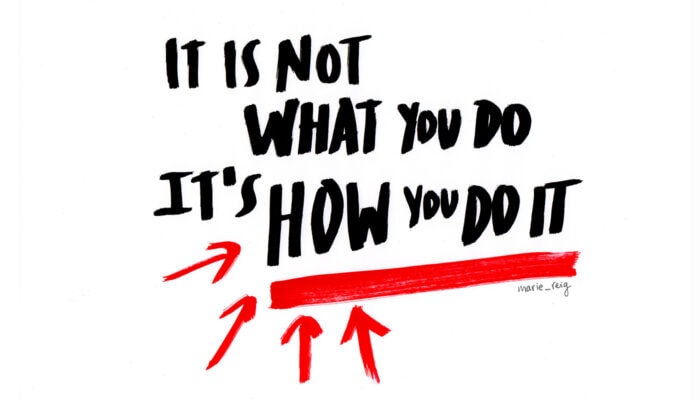
Now that you are able to better recognize what it means to lead from the heart I dare you to start spotting more and more business cases and top leadership testimonials that are making a call to be one of them, a leader of the heart.
Yes, now you see it clearly, leading from the heart it is not only beautiful it also makes business sense. Yeah! It is time to lead from the heart for the most sustainable and positive creative impact.
In our next post, we will delve into exploring the implications of leading from the heart for your creativity to be unleashed. The last question of this series is at stake: What does heart-based leadership have to do with my creative potential?
This is The Journey to the Heart. A shared exploration and discovery quest to better understand what is and what is not heart-based leadership, what are the benefits for you, your team, your organization, and your creativity. What is most important, we are on a mission to uncover if, in truth, you are one of them, a leader of the heart.
Would you like to continue?




